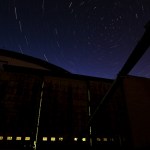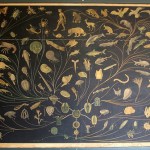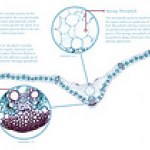Flickr
"Building one space station for everyone was and is insane: we should have built a dozen." -Larry Niven
Here on the solid ground of the Earth, the Sun and Moon rise and set on a daily basis. During the hours where the Sun is invisible, blocked by the solid Earth, the stars twirl overhead in the great canopy of the night sky.
Image credit: Chris Luckhardt at flickr.
In the northern hemisphere, they appear to rotate around the North Star, while in the southern hemisphere, the stars appear to rotate about the South Celestial Pole. The longer you observe -- or for photography, the longer you…
Â
Â
A clever fellow named Eric Fischer tapped Flickr geotag data to map where locals and tourists take photos in major cities. Above -- the wiggly Thames declares it instantly to lovers of this city -- is London, where I'm moving (for a time, anyway) in just a few weeks. Blue denotes photos taken by locals, red by tourists. H/t Ferris Jabr, BoingoBoingo, and Kottke
Here's a chart I made this morning. It depicts the number of new photos tagged "insects" or "insect" uploaded over the history of the leading photo-sharing site Flickr. Note that the graph doesn't show the cumulative total of insect photos on the site; rather, it shows the increase from year-to-year. Thus, even though the rate of increase slowed in 2009, the amount of insect content is still accelerating.
Interpretation of the chart is tricky. The increase may reflect several patterns: a growth in Flickr's popularity, the growth of digital photography, and a growth in overall interest in…
You may have noticed that the images in my left sidebar have recently been depopulated -- awards that my blog has won throughout the years, blogroll icons and even books that I've contributed to .. what is going on? It seems that Flickr is cracking down on miscreants like me who (1) use their site to host graphics, logos and other items -- such as blog awards and book cover art -- and (2) use their site to host photographs that are not theirs, even apparently, if the images appear there with the photographer's permission (goodbye Mystery Birds!). These images have been on my Flickr account…
This beautiful painting is located in Martin Hall at Swarthmore College. Discovered via Colin Purrington's flickr feed.
Zea Poster from m f's flickr stream
Michael Franklin, Rochester Institute of Technology
One of the ways in which I can foresee Web 2.0 applications changing the culture of science is by increasing avenues for mentorship. Web apps allow students from different departments, universities, and nations to connect, collaborate, and exchange advice. This can mean career-changing help for students at small institutions (or for those at large institutions with poor interdepartmental relations or a dearth of experts in a particular field). I'm not just talking about help troubleshooting protocols; far…


